O.V’s Satabhishekam
by menonmyth
In O.V’s Khasak, time stands still. The warm, musty wind breezes through the valley fringed with glorious palm trees laden with fruit. No one knows the actual date or day when Ravi walked into Khasak and rewrote history. It is a legend, as they say. And as legends go, they are never really meant to be understood in a whole, concrete reality. Only surreally.
Yet, Khasak has physical coordinates. In Palakkad district of Kerala, lies a village called Thasrak. O.V spent a year in this idyllic town and drew inspiration from the simple villagers he met there for his Magnum Opus: Khasakinte Itihaasam. The book was churned in the cauldron for 12 long years before it was finally sent to the publishers. In that period of wait, O.V was giving life to his characters, a magical reality they didn’t know existed.
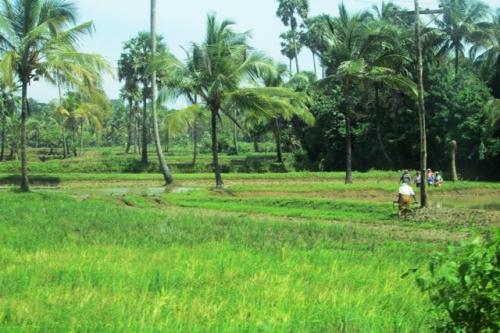
Photo copyright J. Ambika Devi
Readers either love Khasak or hate Khasak. Then, there are readers who begin to love Khasak after reading the text multiple times, maybe over 12 long years. O.V came to me 15 years ago, in my troubled teenage life, through my friend who used to weave mystical tales and retell them on our long walks meandering through Kochi’s humid and narrow roads. Kochi, so distinct from Thasrak and yet so insipidly familiar. We fabricated a web encompassing Thasrak, Khasak, and Kochi. Ravi could be found anywhere. It could be you and me.
Many things warranted this web. My father and O.V share the same roots in Palakkad. I happened to attend a poetry workshop by O.V’s sister, Usha. The books came to me in Malayalam and in the English translated form as birthday gifts. Later, O.V would die in Secunderabad, where I was studying and discovering Linguistics. Many years later, I would come to live in a big city where his only son lives and works. It was as if 15 years ago, my meeting with O.V was pre-written. As O.V would say, it was in my destiny. Similar to how Khasak was in his.
Thasrak smelt like utopia. The same smell as Marquez’s Macondo. Both Marquez and O.V were sons of Modernism with influences ranging from Cubists such as Picasso, Matisse, to Freud, Joyce, and Dostoyevsky who wrote in a literary mode where consciousness like time flowed naturally and discontinuously. Painters, Pollock, Kandinsky moved towards minimalism and abstract expressions. Composers, Cage, Schoenberg experimented with musical styles and atonality. Art was beginning to move towards experimental techniques, radical writing styles, and breaking traditions. O.V pioneered magical realism in South Asia, the same time Marquez did for Latin America. In some sense, Macondo and Khasak are part of the same figment of imagination.
O.V was a loner. He remained confined in his room, connecting to the outside world through his window. When he spoke, he spoke through his work and his cartoons, the latter mainly political in nature. His idiom rewrote the history of Malayalam literature, bringing in the avant-garde. Today, if you happen to pass by Thasrak, stop by to say hello to Appukilli, Maimoona, and Allappicha Mollaka who continue to haunt the valley and the green farmlands. For time stands still in Thasrak.
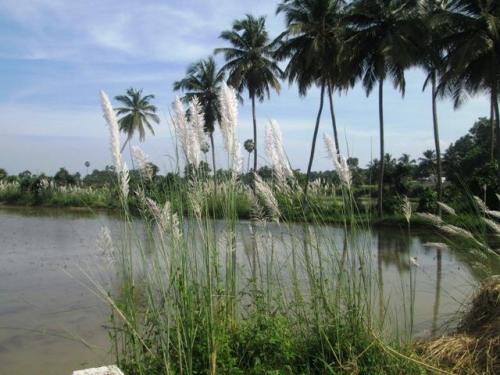
Photo copyright J. Ambika Devi
**************
Oottupulackal Velukkutty Vijayan turns 84 today, July 2 2014. For Malayalees, we call this birthday ‘Satabhishekam’, the day where you lived to see 1000 full moons. O.V is no longer with us, but his Khasak lives to see the 1000 moons and many, many more.
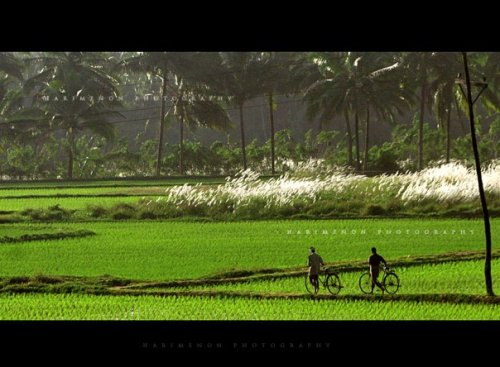
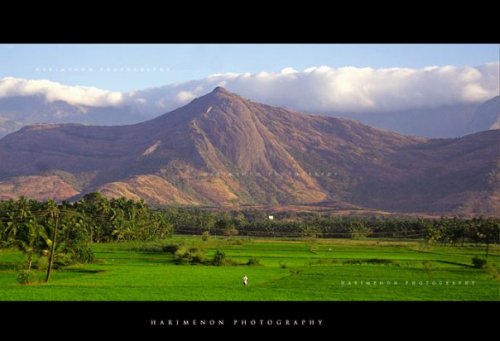
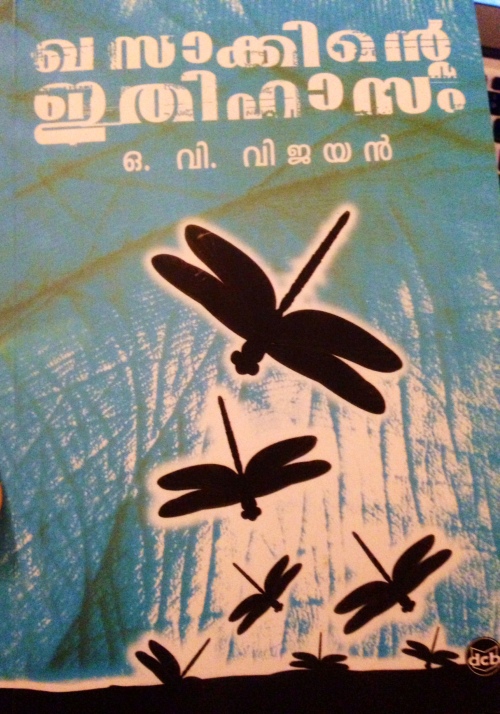
“പുരികങ്ങളുടെയും കണ്ണുകളുടെയും ചുവന്ന പാതയിലെ സായാഹ്നയാത്രകളുടെയും അച്ഛാ, ഇലകൾ തുന്നിച്ചേർത്ത ഈ കൂടുവിട്ട് ഞാൻ പുറത്തേയ്ക്കു പോവുകയാണ്. യാത്ര.”
[…] O.V’s Satabhishekam […]
[…] khasakkinte itihasam- The Legends of khasak khasak- Read here […]